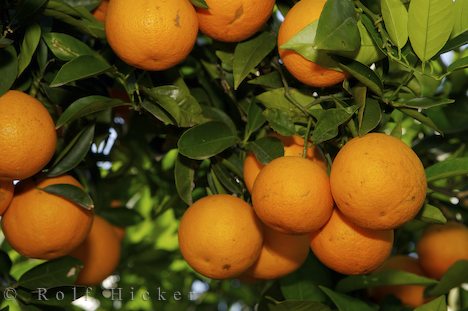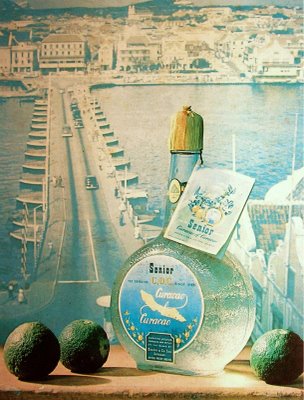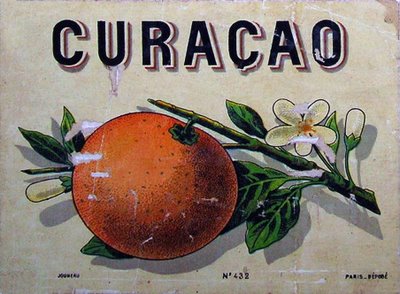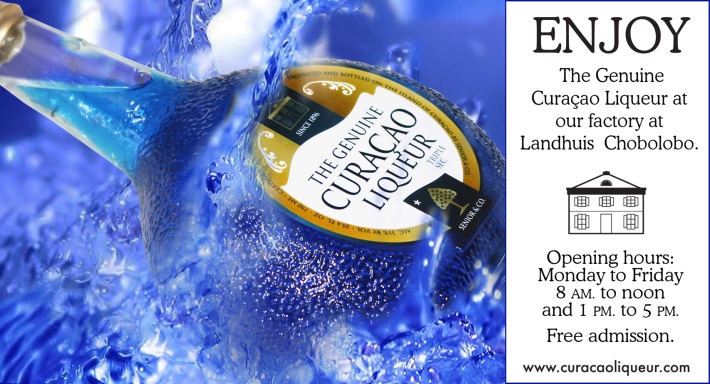
Orange Tree Orchard near Oliva in Valencia, Spain, Europe. Source: http://www.valleycenterorganicgardens.com.
In pre-Dutch days, when the Spanish ruled Curaçao in the early 1500s, they imported their deliciously sweet Valencia oranges in the hopes of cultivating a New World citrus crop. Originally from Southern Asia, the orange made its way to Syria, Persia, Italy, Spain and Portugal… then Spanish missionaries planted it in California… and Spanish explorers took it to Florida and the West Indies. But their beloved Valencia didn’t adapt well to Curaçao’s dry climate and arid soil: it transformed into a hybridized shriveled, bitter, greenish brown “orange”… not to be confused with sweet and zesty Valencia. The Laraha orange grew wild and remained long after the Spanish left Curaçao… their fruit so bitter that our goats would rather starve than eat them.
But Curaçaoans didn’t give up on the Laraha.
Centuries after the Spanish had left, they discovered that sun-dried Laraha peels develop an etheric oil with a pleasing fragrance… and by the 19th century industrious Curaçaoans experimented with different concoctions, hoping to discover a delicious, new alcoholic beverage. (Rumor has it Eduoard Cointreau came to Curaçao during this time, and returned to France to experiment with essential oils as he was perfecting his recipe for Cointreau)
The Sephardic Jewish Senior family, in particular, sensed a special kind of quality within the Laraha. They kept experimenting and finally stumbled upon a pleasantly unique taste when adding various exotic spices and herbs to Laraha oil. (We don’t know much about these ingredients, except for the fact that they were most likely imported from Germany) The story goes that the Seniors placed the mix in special jute bags, allowing the peel and German secrets to steep in alcohol (imported from the Netherlands) for a week, then added some more alcohol, water and sugar… The flavor turned sweet and bright, with a faint twinge of bitterness… The perfect complement to a wide array of cocktails… or fine all by itself…
Eager to share his family’s Laraha liqueur with the rest of the world, Edgar Senior founded Senior & Co. in 1896. True to his brazen form, he named the multi-cultural spirit ‘Curaçao of Curaçao’… Confusing the rest of the world for centuries to come: “wait, you’re actually FROM Curaçao?!… but that’s a liqueur!” (Well, in our case, the turkey IS from Turkey 🙂

Old advertisement displaying traditional clear liqueur.
So why do we insist on hiding the fact that our oranges are in fact “abnormal” and “greenish brown” by printing pretty oranges on our labels?! (We belong to the House of Orange-Nassau? Green might be confused with sour sister, lime…?)

Old advertisement.
And… why is the liqueur’s claim to international fame the color ‘Blue’ as in
‘Blue Curaçao of Curaçao’ or simply ‘Blue Curaçao’?
Well, as it turns out, the traditional clear version was colored blue in the 20th century, by simply adding good old-fashioned, ‘all-natural’ food coloring… imported from the US of A.

So there you have it, folks.
The genuine Senior ‘Curaçao of Curaçao’ Liqueur is actually clear as day and consists of Spanish, German and Dutch ingredients — modified and adapted in Curaçao by creative Curaçaoans — and colored blue (and other lesser-known colors) to appeal to American cocktail aficionados.
(Hello, Blue Man Group, are you there?!)
Next time you sip a blue cocktail, please note that it came from the awesome island of Curaçao!
…Not the other way around…
Visitors:
Visit Landhuis Chobolobo (free admission) and time-travel to 1896, where genuine Senior Curaçao of Curaçao Liqueur is still distilled in the same copper still and the same wooden knife is used to peel Larahas… Open on weekdays from 8:00am to noon, and 1:00pm to 5:00pm. For more info, check out the Curacao of Curacao website, where you’ll also find a few tasty cocktail recipes.
You might also find the original Curaçao of Curaçao Liqueur closer to home if you live in the US; Anchor Distilling Company imports the genuine liqueur in their round bottles – so as to not be confused with its mass produced substitute sans Laraha oranges.
—————-
Also: 705. Our Laraha’s Bitter Smell of Success





Great in fruit salads too!
Great in fresh fruit salads too!
Pingback: 705. Our Laraha’s Bitter Smell of Success | 1000 Awesome Things About Curaçao
Pingback: 656. Curaçao’s Multi-Ethnic Menu | 1000 Awesome Things About Curaçao
Pingback: 600. 12 Things Curaçao Expats Can’t Leave Curaçao Without | 1000 Awesome Things About Curaçao
Very nicee post